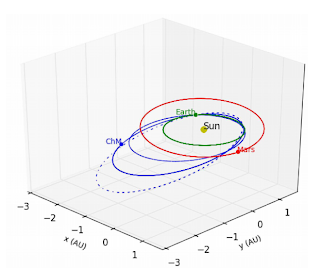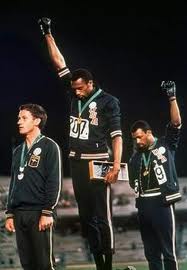All you have to do is go to www.razorlinepress.com, click on any post and respond with, "Yes, I'd like a free copy of The Prophet." Make sure your email address is included because that's what I'll be using to send it to you as a gift through Amazon's website.
Description
Greg is a reporter who is about to get the story of his life. The Prophet, an elusive figure who makes predictions about disasters has just tapped him to do an exclusive interview. Except Greg's not really a reporter. Two minutes before entering his apartment, he didn't exist and when he meets the Prophet he finds out his true purpose- to kill the Prophet. But killing someone who is near omnipotent isn't easy, in fact, it takes more than one try even if you get it right.
The Prophet is a half horror, half weird, half comedy that will leave your jaw fully dropped by story's end.
Excerpt
No,” the Prophet materialized out of the flashes- shoeless, in jeans with ragged cuffs and his hands stuffed in the pockets of a grey hoodie. His beard hung to his knees, but it was edged at his cheeks and jawline. Locks of hair spilled out of his hood, trailing down to mid-chest. If it weren’t for the eyes, he’d look like a hippie-ish twenty-something. But those eyes held the ancient stare of the bug-fucking nuts. Greg realized this person had the same face, but this wasn’t the man he’d seen earlier in the shower.
“Where?” the Prophet said.
“The guy… y’know, the one standing right there.”
“I don’t see anyone.”
Blue walked over and grabbed Greg by the shirt sleeve, giving it a good tug. “He’s right here.”
“No. Sorry, I see nothing but you making the international sign for jerking off.”
“Wha—oh.” Blue sounded embarrassed and let go of Greg’s shirt.
“I knew Anthony was up to something.” The Prophet scratched under the corner of his lip. He looked in the general area where Greg was. Greg was glad those eyes couldn’t find him. “Did he send you here to kill me? He should have told you I can’t die. I am not a man.” Somebody giggled. “Shut up! You know what I mean.”
The Prophet reached up with both hands and made tight fists around his eyes. He grimaced, a single, strangled cry coming from his throat as trickles of blood ran down his cheeks. He yanked his hands back and Greg saw empty holes where his eyes used to be, blood flowing freely from the empty spaces.
“Gather closer, children,” he said. They all pulled in tight around him and he began reaching out, feeling their faces one at a time.
“Too big… too squishy…” he mumbled as he passed each one by. “I really should have done this part first.” Finally, he settled on a face that seemed to be to his preference. A short, fox-headed man looked nervously right and left, but his body went rigid. He seemed to be struggling, but didn’t move.
“Now open your eyes… wide.” Fox-head reared his head back, but it was a far cry from the distance he needed to get away from the Prophet. He made small, grunting noises as the Prophet raised his hands, turning them so his thumbs were poised directly over his face.
He plunged them beneath Fox-head’s eyes, working his hands like he was trying to work twin combination locks with only his palms. Fox-head’s mouth was pulled back like he wanted to scream, but no sound came out. Everyone was silent. The only sound was the dual squelching as Fox-head’s eyes were being plucked out.
It probably only took seconds, but they stretched on forever as Greg watched Fox-head’s bulging eyes being extracted from the sockets.
They finally came free and he collapsed, his limbs curling up to his torso like a newborn baby. His mouth hung open in agony, but still he didn’t scream.
Greg didn’t know how long he stared at the manimal on the ground, but at some point the Prophet had put the new eyes in his own head.
“There you are,” he said, looking at Greg and wiping the trails of blood off his cheeks with the backs of his hands. He pointed a gun finger at him and fired. “You’re dead.”
Greg felt a flash of white, pain more intense than anything he’d felt in his life and then it was gone. He looked down and saw a perfectly circular hole in his chest and stomach that he guessed went all the way through. Something warm and red squished around in his socks. He looked up at the Prophet, wanting to ask a question, but the words were suddenly a million miles away.
He collapsed.
“Now that that problem’s taken care of, let’s get Neil out of my forge.”
“It’s Harry, master.”
“Whatever. Just get him out. I’ve got a schedule to keep.”
Greg lay on the ground, listening to them talk and mill about. It surprised him that he could listen to anything at all, unless this was supposed to be the afterlife. But then he opened his eyes and looked at his hand and then he began drumming his fingers on the dirt.
“Would somebody scoop that thing up and feed it to something?”
Feet moved closer to him and then two pairs of arms lifted him half to his feet.
Greg raised his head and saw the Prophet surveying the pit.
“You have everything you need,” Anthony had said. Greg wondered at that, but quickly realized he had the solution to his current problem.
He opened his mouth, moving his lips and waggling his tongue. Despite having no lungs, he was trying to speak.
The words came out, but they were thick and unintelligible. But loud enough that the two people-things holding him heard and most importantly, so did the Prophet. He turned and let his hands slide from the small of his back.
“What?” the Prophet said. He had a look of dumb shock, so Greg repeated.
“I said,” Greg began and cleared his throat, “you’re a pizza.”











